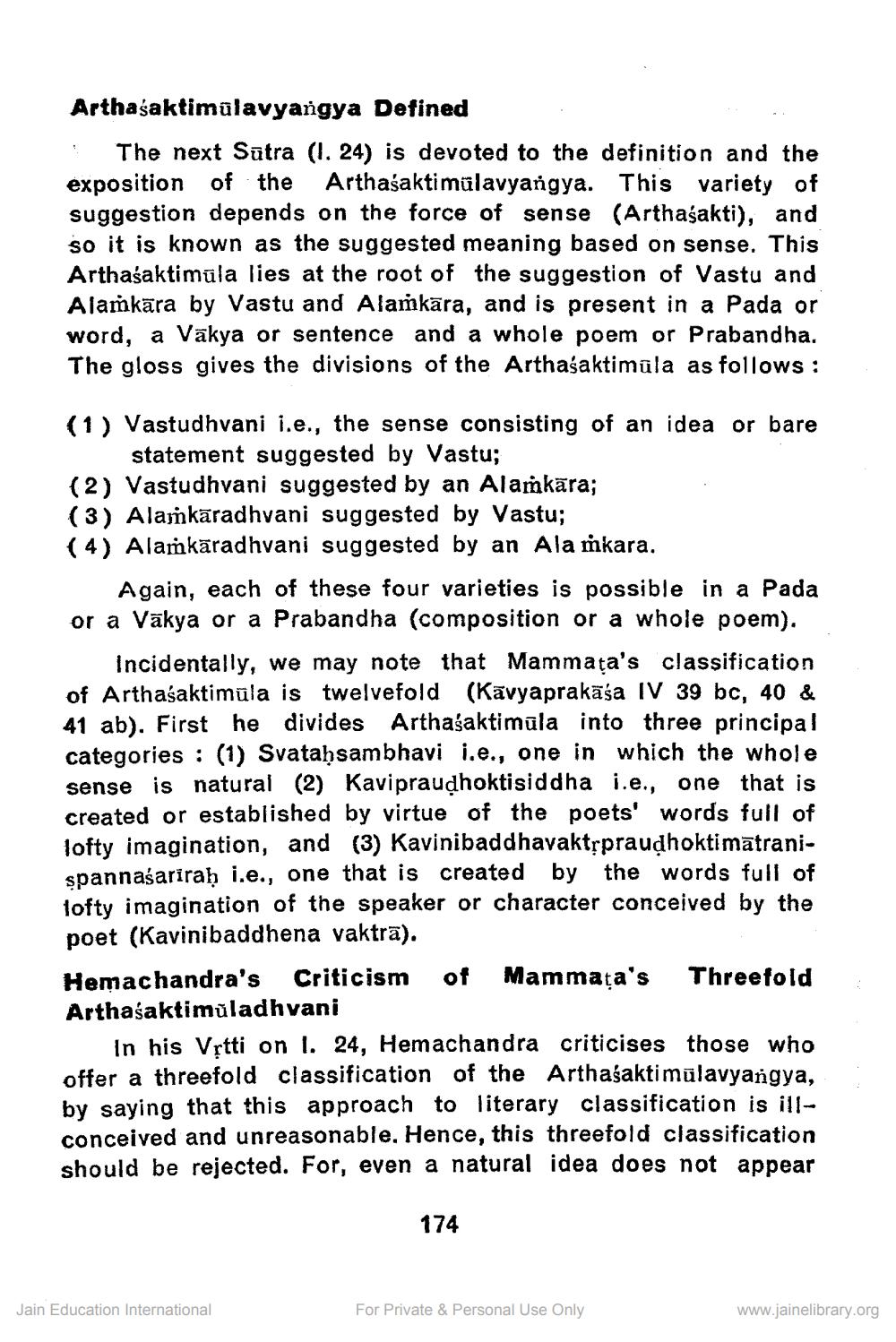________________
Arthasaktimülavyangya Defined
The next Sūtra (1. 24) is devoted to the definition and the exposition of the Arthasaktimülavyangya. This variety of suggestion depends on the force of sense (Arthasakti), and so it is known as the suggested meaning based on sense. This Arthasaktimula lies at the root of the suggestion of Vastu and Alamkāra by Vastu and Alamkāra, and is present in a Pada or word, a Vākya or sentence and a whole poem or Prabandha. The gloss gives the divisions of the Arthasaktimüla as follows:
(1) Vastudhvani i.e., the sense consisting of an idea or bare
statement suggested by Vastu; (2) Vastudhvani suggested by an Alamkāra; (3) Alažkāradhvani suggested by Vastu; (4) Alamkāradhvani suggested by an Ala ṁkara.
Again, each of these four varieties is possible in a Pada or a Vākya or a Prabandha (composition or a whole poem).
incidentally, we may note that Mammața's classification of Arthasaktimula is twelvefold (Kavyaprakāśa IV 39 bc, 40 & 41 ab). First he divides Arthasaktimüla into three principal categories : (1) Svataḥsambhavi i.e., one in which the whole sense is natural (2) Kavipraudhoktisiddha i.e., one that is created or established by virtue of the poets' words full of lofty imagination, and (3) Kavinibaddhavaktspraudhoktimātranispannaśarirah i.e., one that is created by the words full of lofty imagination of the speaker or character conceived by the poet (Kavinibaddhena vaktrā). Hemachandra's Criticism of Mammata's Threefold Arthasaktimüladhvani
In his Vrtti on l. 24, Hemachandra criticises those who offer a threefold classification of the Arthasakti mülavyangya, by saying that this approach to literary classification is ille conceived and unreasonable. Hence, this threefold classification should be rejected. For, even a natural idea does not appear
174
Jain Education International
For Private & Personal Use Only
www.jainelibrary.org




